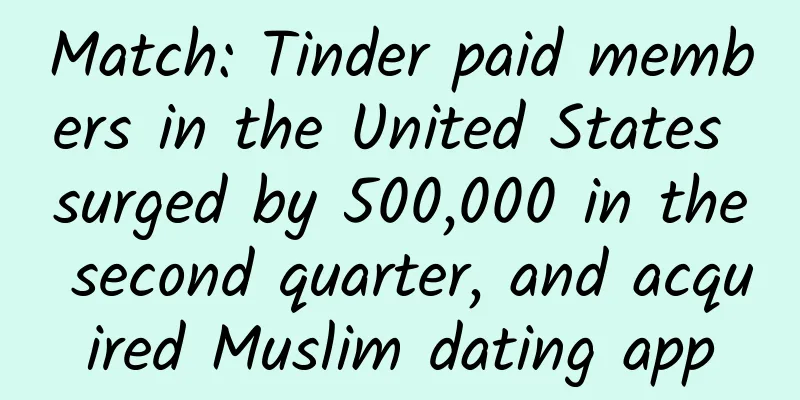Why do I have a little pain in my breast?

|
As one of the symbols of women, breasts not only attract the attention of many male friends, but also are related to women's physical health. Many women say that they always experience breast pain in their daily lives. Sometimes the pain disappears after a while, and sometimes the pain continues for two or three days. So, what exactly is going on when you have a little pain in your breasts? You need to be alert to the following reasons. What causes breast pain? Breast pain is a common complaint in outpatient clinics. Breast pain can be divided into cyclical and non-cyclical, and can also change from cyclical to non-cyclical. 2/3 of breast pain is cyclical. The vast majority of patients are premenopausal women. The most common site of pain is above the outer side of the breast, and symptoms worsen before menstruation. The pain is characterized by distension, heaviness and tenderness. 1. Breast pain caused by reasons other than breasts: In fact, it is diseases in other parts of the body that manifest as pain in the breast area, such as pneumonia and costochondritis. 2. Cyclic breast pain: It is related to the menstrual cycle and reflects the cyclical changes in hormones in the body. This pain is largely normal and mainly occurs in premenopausal women, especially before the age of 35. Most cases can be relieved by themselves. 3. Non-cyclical breast pain: Compared with cyclical breast pain, non-cyclical breast pain is more worthy of attention. But most non-cyclical breast pain is also benign. Its characteristics include intermittent onset, variable pain intensity, mostly unilateral occurrence, and sharp nature. Is breast pain a disease? Although this is an era of high incidence of breast cancer, don't panic. 90% of breast pain is not a sign of disease! 1. Insufficient breast development, forming nodules Many women experience breast pain, which is related to their hormone levels. Insufficient breast development, medically known as incomplete involution, often causes breast pain. The process of changes in hormone levels caused by women's menstruation is like the ebb and flow of the tide. After the tide recedes, mud and sand will be left behind. These "mud and sand" that are not left behind when the tide recedes are equivalent to the epithelial cells that are constantly shed and renewed in the breast. They remain in the mammary ducts and cause incomplete degeneration. Many women will feel many nodules in their breasts. Whether they are lump-shaped, sand-shaped, nodular-shaped, strip-shaped, or plaque-shaped, they are all normal. Before pregnancy, the mammary ducts are blocked by accumulated epithelial cells, forming hard nodules. However, after pregnancy, due to the influence of estrogen and progesterone, the breasts are fully developed and the nodules disappear without treatment. 2. Third degree pain requires medical attention as soon as possible According to experts, breast pain is divided into three degrees. First degree is pain felt when touched with the hand, second degree is pain felt when moving, and third degree is pain at rest, which means pain felt even when lying in bed. First-degree pain does not need to be treated, but second-degree pain can be considered It can be solved by taking medicine. Third-degree pain is also called severe pain, so you can go to the doctor. 3. Breast hardness has nothing to do with disease In addition to breast pain, the hardness of the breasts can also be graded: one degree is as soft as the lips, two degrees is moderately soft and hard like the nose, and three degrees is as hard as the forehead. But whether it is soft or hard, it does not indicate any disease. If you feel a "swelling" in your breast and it is symmetrical on both sides, then you can consider it as ordinary hyperplasia. If the "swelling" changes before and after menstruation, then there is no need to worry about cancer. 4. Women over 35 should have regular checkups Regarding the problem of breast pain in women, experts recommend that women over 35 years old need to undergo regular breast screening; for women under 35 years old, if the breast pain is severe enough to affect their daily life and they feel a "swelling", then they need to go to the hospital for medical treatment. |
<<: How to stop excessive menstrual bleeding?
>>: What medicine should women take for spleen deficiency and damp-heat?
Recommend
In which season are grasshoppers born? What are the distinctive features of grasshoppers?
The scientific name of grasshopper is locust. Loc...
Is it normal to not see the embryo at 45 days of pregnancy?
Many pregnant mothers are worried about not seein...
Pictures of cesarean section vertical incision 2 years ago
Most people know that there are two types of abdo...
Where to operate on uterine polyps
Uterine polyps are a common gynecological disease...
Detailed introduction to the method of fish soup for pregnant women
Pregnant women are a relatively special group. Wh...
What should I do if my endometrium is thin and I have amenorrhea?
Thin endometrium can cause oligomenorrhea or amen...
Brown discharge to prepare for pregnancy
When women have sex after marriage, their vaginas...
What to do if the areola becomes larger after childbirth
After giving birth, your breasts will experience ...
Why is the vagina itchy?
There are many ways to itch the genitals. Some wo...
Why do breasts suddenly become bigger and softer?
Women spend a lot of money on their first face, b...
What are the treatments for poor follicular development?
The development of follicles is the key to whethe...
Caesarean section sequelae: heavy menstruation
With the development of science and technology, c...
What are the advantages and disadvantages of drinking coffee for women
There are many people who like to drink a lot of ...
What dishes can be made with Coke? Can Coke and milk tea be drunk together?
Coke is a carbonated beverage and a high-calorie ...
Can induced abortion be performed at eight months?
Some women, for some reasons or because of the fe...









